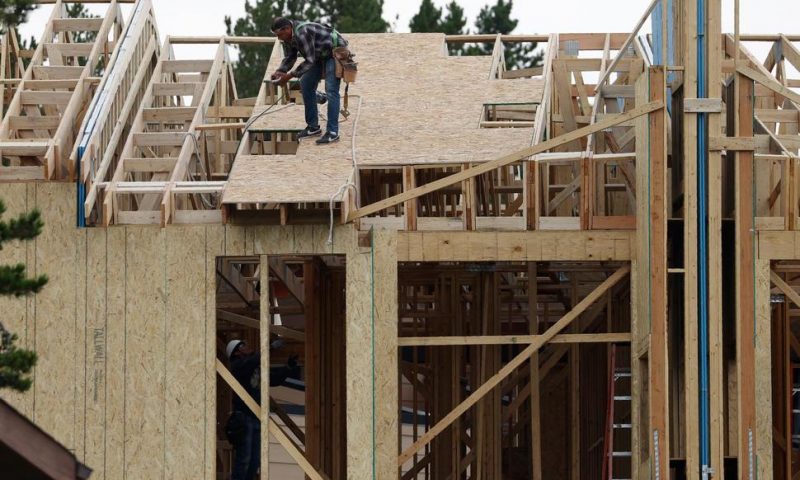U.S. housing construction fell 5.1% in August after three months of strong gains as home builders mounted a rebound following a pandemic-induced shutdown in March and April.
WASHINGTON — U.S. housing construction fell a surprising 5.1% in August after three months of strong gains when home builders ramped up projects following a pandemic-induced shutdown in March and April.
New homes were started at a seasonally adjusted annual pace of 1.42 million last month after a 17.9% surge in July, the Commerce Department reported Thursday.
Applications for building permits, which is a good barometer of future activity, dipped a slight 0.9% in August to a seasonally adjusted 1.47 million but that decline followed solid gains in the previous three months including a 17.9% rise in July.
While the drop-off in new homes was greater than economists had expected, construction remains 51.6% above an April low and economists said they expected home building to remain one of the bright spots in an economy still struggling with the coronavirus.
“Strong demand and a soaring level of home builder confidence will continue to support housing starts in the second half of 2020, though lingering coronavirus uncertainty and the economy’s slower pace of recovery may limit the upside,” said Nancy Vanden Houten, lead U.S. economist at Oxford Economics.
This week a survey gauging builder sentiment found strong optimism. The survey by the National Association of Home Builders and Wells Fargo showed that builder confidence reached to an all-time high in September, even in the face of rising costs for building materials.
Construction starts in the bigger single-family sector showed further strength in August, rising by 4.1% but this gain was offset by a sharp 25.4% drop in construction starts in the more volatile apartment sector.
Declines in overall construction activity were led by the Northeast, where home construction fell 33.1%. There was also a decline of 17.7% in the South, traditionally a strong region.
Strength in August came from solid gains of 28.4% in the Midwest and 19.5% in the West.

